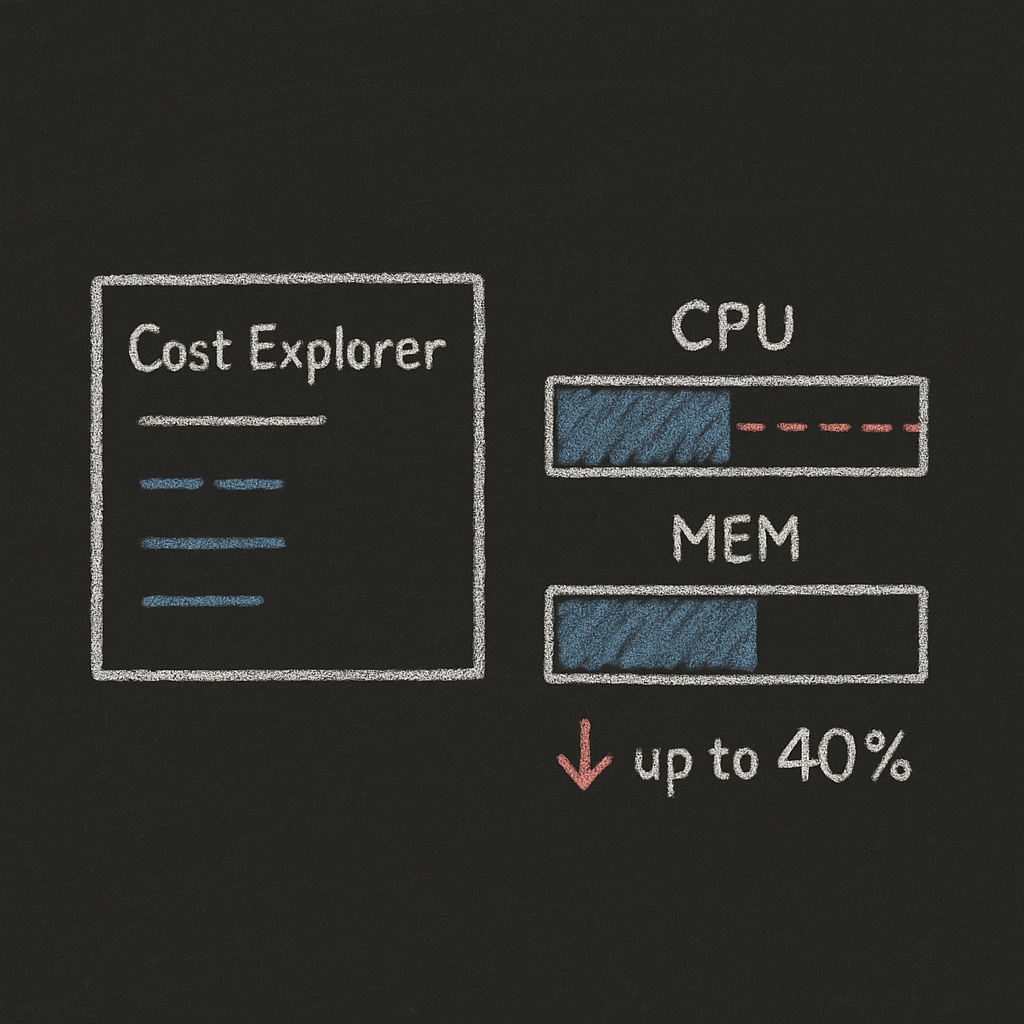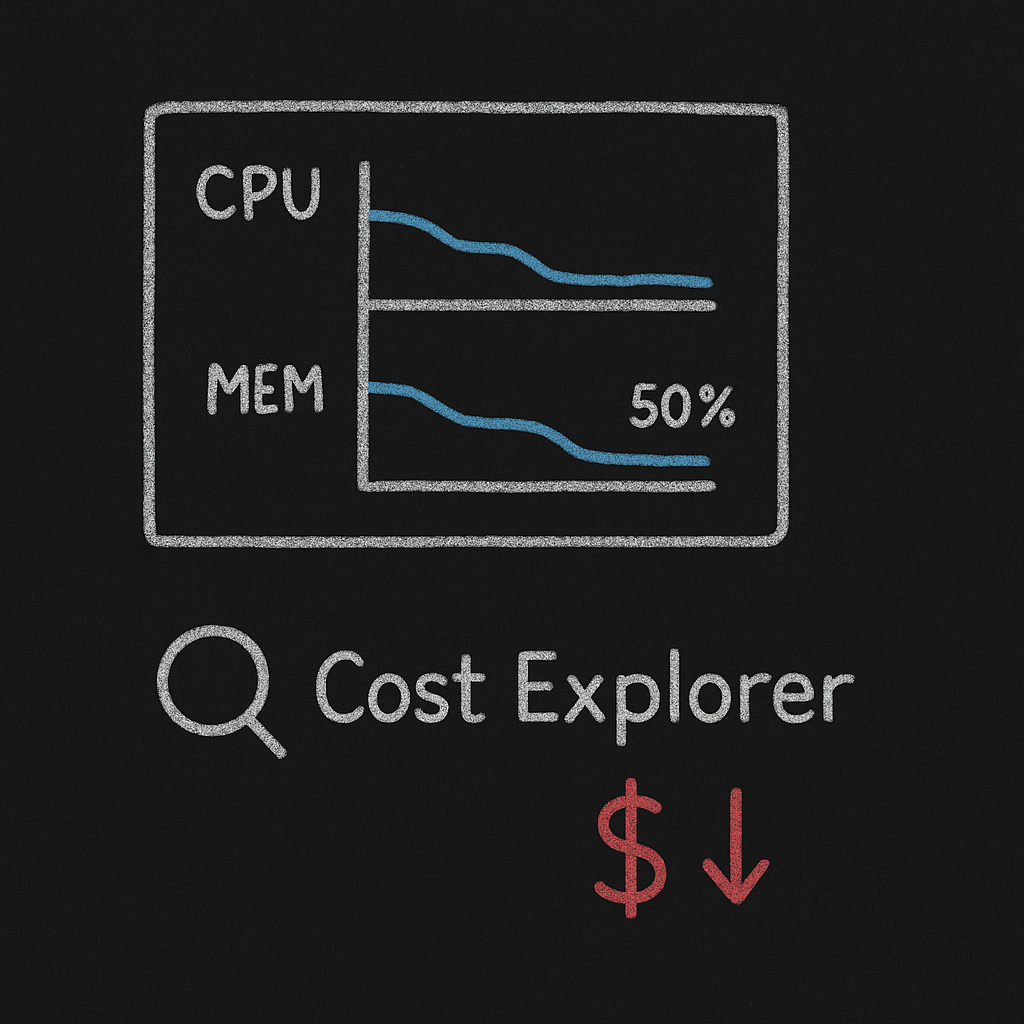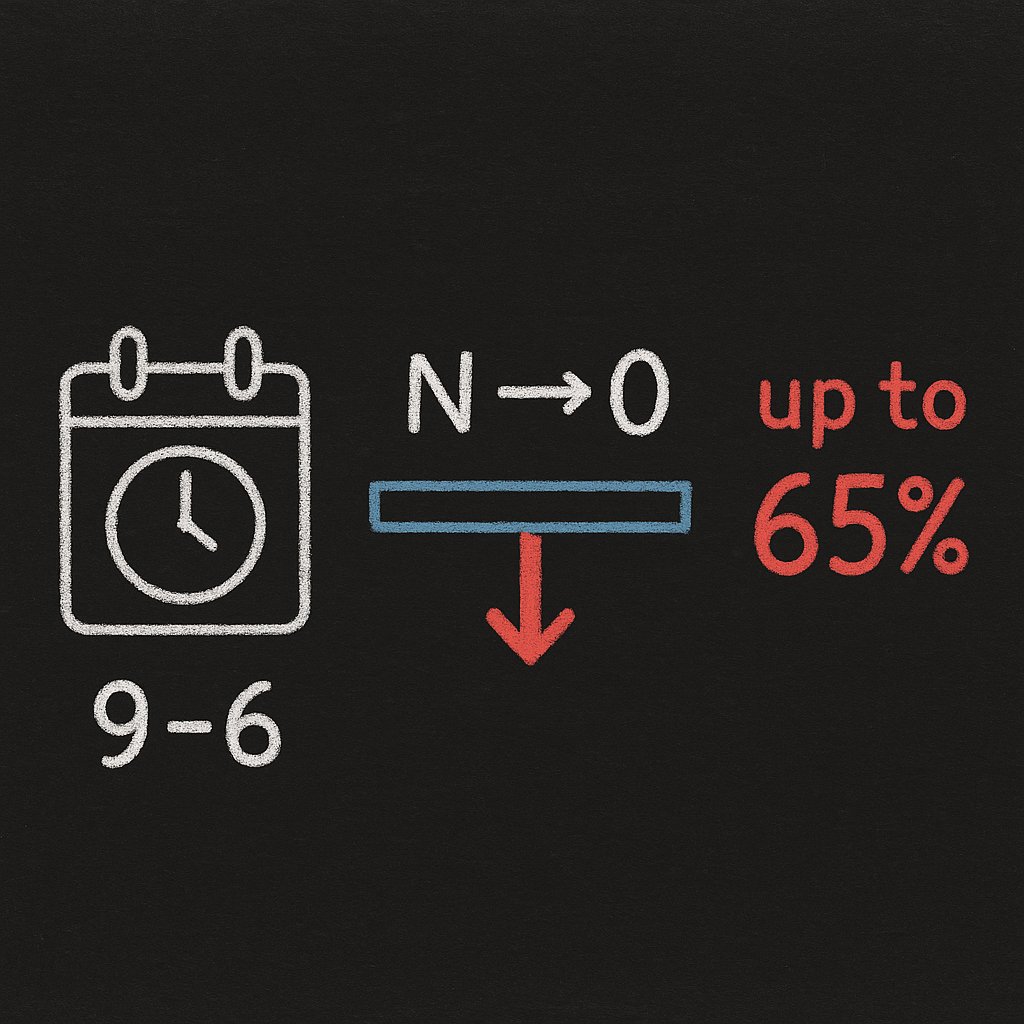AWS Fargate cost optimization tips: proven strategies to cut ECS and Fargate spend by up to 40%
Fargate’s serverless promise is compelling—no infrastructure headaches, fast scaling, pay-per-second precision. Yet for many engineering teams, the AWS bill climbs faster than expected. A 2 vCPU, 4 GB Fargate task running 24/7 in us-east-1 costs roughly $60 per month; multiply that by 100 tasks and you’re looking at $72,000 annually—often for containers using only 30% of their allocated CPU and memory.
Breaking down where your ECS and Fargate dollars go
Before you optimize, you need visibility. AWS Cost Explorer is your starting point for understanding ECS and Fargate spend. Navigate to Cost Explorer and filter by Service = Elastic Container Service or Service = Fargate. Add dimensions like Linked Account, Region, and Usage Type to see which accounts, regions, and resource types (CPU hours, memory GB-hours) drive costs.
Look for these red flags: tasks sized with 4 vCPU and 8 GB memory consistently running at 20% utilization, development and staging tasks left running 24/7 when they’re only touched during business hours, high data transfer charges from cross-region replication or inefficient networking patterns, and unused or orphaned load balancers still attached to terminated ECS services.
Create a CloudWatch dashboard tracking CPUUtilization and MemoryUtilization for each ECS service over 30–90 days. If your median sits below 50%, you’re leaving money on the table. Organizations implementing robust cost visibility and tracking practices can achieve up to 40% savings while maintaining or improving performance.

Right-sizing tasks: the 35% savings you’re probably missing
Teams routinely provision Fargate tasks with 2–4 vCPU and 4–8 GB memory “just to be safe,” then discover those containers peak at 0.5 vCPU and 1.5 GB. Right-sizing those tasks can reduce costs by 30–70% for long-running workloads.
Start with the minimum viable allocation and iterate upward based on actual performance data. For a typical web API, begin with 0.5 vCPU and 1 GB memory for low-traffic services. Monitor CPU and memory usage in CloudWatch Container Insights for two weeks. If your 99th percentile exceeds 70% utilization, bump to the next Fargate size (e.g., 0.5 vCPU → 1 vCPU). Repeat until your peak sits comfortably at 60–80%.
AWS Compute Optimizer analyzes CloudWatch metrics and provides task-level recommendations. Run it monthly and act on “over-provisioned” findings. One common pattern: teams discover they can drop from 1 vCPU / 2 GB ($30/month per task for 24/7 usage in us-east-1) to 0.5 vCPU / 1 GB ($15/month), cutting their bill in half.
Fargate charges separately for vCPU and memory. In US East (Ohio), you pay $0.04048 per vCPU-hour and $0.004445 per GB-hour. That means a 1 vCPU, 2 GB task costs approximately $0.04937 per hour—but cutting to 0.5 vCPU and 1 GB drops that to $0.02469 per hour, a 50% reduction for workloads that genuinely fit those smaller limits. Understanding these cost implications becomes crucial for Fargate efficiency, as container sizing and execution patterns directly impact your bottom line.

Fargate vs ECS on EC2: when to switch launch types for bigger savings
Fargate simplifies operations but commands a premium. ECS on EC2 gives you control, bigger potential for Reserved Instance and Savings Plan discounts, and better task density—but adds the burden of managing instances and cluster capacity.
Fargate makes sense for bursty or unpredictable workloads that scale from 5 to 50 tasks within minutes, small fleets (fewer than 20 tasks) where EC2 instance overhead isn’t worth it, and teams without dedicated infrastructure resources who value serverless simplicity.
ECS on EC2 wins for steady-state production workloads running dozens or hundreds of tasks 24/7, high task density where you can pack 10+ small containers on a single m6i.large, and environments where you already manage EC2 and can leverage existing Reserved Instances or Savings Plans.
For example, if you’re running 50 identical 0.5 vCPU / 1 GB tasks around the clock, Fargate costs roughly $750/month. Switching to ECS on EC2 with three m6i.large instances (each packing ~16 of those tasks) and a 1-year Standard Reserved Instance could drop that to under $400/month—a 47% saving. Teams routinely achieve 30–40% cost reductions on Kubernetes clusters without sacrificing reliability, and similar optimization strategies apply to ECS workloads. The operational overhead of managing EC2 capacity is real, though, requiring attention to cluster scaling and health.
Consider a hybrid model: Fargate for your front-end web services that need rapid scaling, EC2 for your batch processors and background workers where task density and cost efficiency matter more. Fargate reduces operational overhead by eliminating manual scaling but requires specialized monitoring to optimize costs effectively.
Pricing models: on-demand, Savings Plans, and Spot for ECS on EC2
Fargate pricing is straightforward—you pay per second for the vCPU and memory you request, with no upfront commitment. ECS also has no additional cluster fees; you only pay for underlying compute resources. But if you’re running ECS on EC2, you unlock additional savings levers through strategic pricing model selection.
On-Demand pricing is your baseline: simple, flexible, and the most expensive per hour. Use it for variable or short-lived workloads where commitment isn’t feasible or practical.
Compute Savings Plans deliver discounts of up to 72% compared to On-Demand when you commit to a consistent dollar-per-hour spend for one or three years. Crucially, Compute Savings Plans apply to both Fargate and EC2, and they cover ECS tasks, Lambda invocations, and even EKS pods. If your container environment spans multiple services or you’re migrating between orchestration platforms, a Compute Savings Plan offers the flexibility to shift usage without wasting your commitment.
EC2 Instance Savings Plans and Reserved Instances tie discounts to a specific EC2 instance family and region. If your ECS cluster runs a stable baseline of m6i instances in us-east-1, a 1-year Standard Reserved Instance can save you up to 72% versus On-Demand pricing. The catch: RIs are less forgiving if you change instance types or regions. For that reason, many teams layer a Compute Savings Plan to cover their flexible Fargate usage and top up with EC2 Instance Savings Plans or Reserved Instances for their steady EC2 baseline.
Spot Instances offer the deepest discounts—often up to 90% off On-Demand—but AWS can terminate them with two minutes’ notice. For ECS on EC2, Spot capacity should be used where safe for queue/worker and batch/analytics workloads.
Configure your ECS Capacity Provider to mix On-Demand and Spot capacity. A common strategy: set your baseline to On-Demand or Reserved Instances for reliability, then add Spot capacity for burst traffic or non-critical tasks. Keep Spot workloads to scenarios where interruption is acceptable and implement fallback mechanisms—such as Auto Scaling groups that launch On-Demand instances if Spot capacity becomes unavailable.
For ECS Fargate, Spot isn’t an option at the task level, so your primary levers remain right-sizing and Compute Savings Plans. ECS on EC2 unlocks Spot’s dramatic discounts, but at the cost of managing instance lifecycle and cluster health.
Autoscaling and scheduling tactics that cut waste without sacrificing availability
Autoscaling is your first line of defense against paying for idle capacity. ECS Service Auto Scaling adjusts your task count based on metrics like CPU utilization, memory utilization, or custom CloudWatch metrics (requests per task, queue depth). A well-tuned scaling policy keeps your application responsive while minimizing over-provisioning.
Target tracking is the simplest and most effective approach for most workloads. Set a target—say, 50% CPU utilization—and ECS automatically scales your task count to maintain that threshold. For web and API workloads, target tracking on CPU with a 40–60% threshold provides the right balance between cost and headroom. For queue-driven workers, use a custom metric like ApproximateNumberOfMessages / RunningTaskCount to scale based on queue depth rather than CPU—with target tracking on queue depth per instance and step scaling for surge thresholds.
Step scaling applies tiered adjustments for sudden spikes. For example, if CPU exceeds 70%, add 5 tasks; if it hits 85%, add 10 tasks. This pattern works well for bursty traffic where you need aggressive scale-out but controlled scale-in to avoid thrashing.
Scheduled scaling is the easiest win for non-production environments. If your development and staging ECS services only see traffic from 9 AM to 6 PM Eastern, schedule them to scale down to zero tasks overnight and on weekends. AI-driven optimization tools can detect idle environments (e.g., after 8 PM) and automatically schedule shutdowns, potentially saving thousands of dollars monthly. This alone can reduce costs by up to 65% on those environments—tens of thousands of dollars annually for larger teams.

For ECS on EC2, Capacity Providers manage the underlying instance fleet. Configure your Capacity Provider with a target utilization (e.g., 85%) and ECS will scale your Auto Scaling Group to maintain that density. Pair this with Spot capacity for non-critical tasks and Reserved Instances for your production baseline.
One pitfall: scaling lag. Capacity provider lag in ECS on EC2 can add minutes to scaling events as new instances launch, pull container images, and register tasks—Fargate launches are typically faster for scaling bursts. If you need sub-minute scale-out, Fargate or warm pools (idle instances ready to accept tasks) may be worth the added cost. Conversely, aggressive scale-in can cause thrash where tasks are added and removed repeatedly. Oversized targets (e.g., 30% CPU) increase costs, while aggressive scale-in can cause thrash and hidden latency costs—best practices for autoscaling configuration help strike the right balance.
Container resource limits: set them right or pay the price
Every ECS task definition specifies CPU and memory limits. Get them wrong and you’ll either over-provision (wasting money) or under-provision (causing OOMKills and application failures). Understanding the cost implications of container sizing becomes crucial for Fargate efficiency.
For Fargate, you choose a task-level CPU and memory configuration from AWS’s predefined combinations (e.g., 0.5 vCPU with 1–4 GB memory, 1 vCPU with 2–8 GB, etc.). Each container within that task can then request a portion of those resources. Make sure your total container requests don’t exceed the task allocation, and monitor actual usage to identify over-provisioned tasks.
For ECS on EC2, you have more granularity. Define soft limits (the amount reserved) and hard limits (the maximum a container can use). If a container exceeds its hard memory limit, the kernel kills it. If it exceeds CPU, it gets throttled. Setting limits too low causes instability; setting them too high reduces task density on each instance and drives up costs.
Use CloudWatch Container Insights to see per-container CPU and memory usage. If a container’s average utilization sits below 40% of its limit, you’re over-provisioned. Tighten the limits incrementally and validate with load testing. Conversely, if you see frequent OOMKills or CPU throttling, increase the allocation.
A practical example: you have a Node.js API container with a 2 GB memory limit, but CloudWatch shows it peaks at 800 MB. Dropping the limit to 1 GB frees up half the memory on your EC2 instance, potentially doubling the number of tasks you can pack on that host—halving your instance count and your EC2 bill. Regular analysis of application performance metrics is essential for avoiding overprovisioning while maintaining reliability.
When to use third-party tools like Hykell for automated savings up to 40%
Even with the best intentions, most teams struggle to capture every optimization opportunity. Manual reviews are time-consuming, recommendations pile up in AWS Trusted Advisor and Compute Optimizer without action, and the environment evolves faster than your quarterly cost audits.
Third-party cost optimization platforms fill that gap. Tools like Hykell continuously analyze your AWS usage, identify under-utilized resources, and recommend or automatically implement optimizations—right-sizing tasks, consolidating workloads, adjusting Savings Plan coverage, and scheduling non-production resources.
Hykell’s approach focuses on automated, no-touch optimization. Instead of delivering a report for your team to manually execute, the platform implements changes during maintenance windows with rollback safeguards. For ECS and Fargate, that means task right-sizing based on actual CPU and memory patterns across your fleet, optimal pricing model recommendations (Fargate vs ECS on EC2, On-Demand vs Savings Plans), automated scheduling of development environments to shut down after 8 PM (potentially saving thousands monthly), and real-time monitoring tied to your AWS cost KPIs and business outcomes.
The value proposition is straightforward: Hykell reduces AWS costs by up to 40% automatically, and you only pay a percentage of the savings realized. If the platform doesn’t find actionable savings, you don’t pay. For teams running hundreds of ECS tasks or large Fargate deployments, even a 20% reduction can mean tens of thousands of dollars in annual savings—far exceeding the cost of any optimization tool.
Consider using a third-party platform if your team lacks dedicated FinOps resources to monitor and act on cost insights weekly, you’ve already picked the low-hanging fruit (deleted idle resources, right-sized a few services) but know more savings exist, your ECS and Fargate spend exceeds $10,000 per month making even a modest percentage reduction material, or you want continuous optimization without engineering toil.
For broader context on AWS cost management strategies, including tactics beyond containers, explore the full spectrum of tools and practices that mature cloud teams deploy to maximize efficiency.
Put these tactics to work this week
Fargate and ECS cost optimization isn’t a one-time project—it’s an ongoing practice. Start with the highest-impact changes: audit your task definitions for over-provisioned CPU and memory, schedule non-production tasks to scale down overnight, and evaluate whether steady workloads belong on ECS with EC2 and Reserved Instances instead of Fargate’s premium pricing.
Layer in autoscaling policies that match actual demand, not guesswork. Use Cost Explorer and CloudWatch Container Insights to validate every assumption with real data. Combine right-sizing with strategic pricing models and effective autoscaling to capture the full spectrum of savings opportunities. And if you’re managing a complex ECS environment with dozens of services, consider automation tools like Hykell to capture savings you’d otherwise miss.
The typical organization leaves 30% of their AWS spend on the table. With the strategies in this guide—right-sizing, smart pricing models, effective autoscaling, and where it makes sense, automated optimization—you can reclaim a significant portion of that waste and redirect those dollars toward innovation instead of idle containers. Ready to see where your savings are hiding? Hykell’s cost audit can show you exactly what’s possible in your environment.
